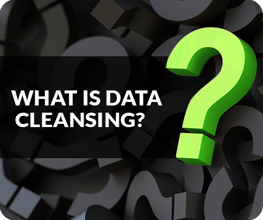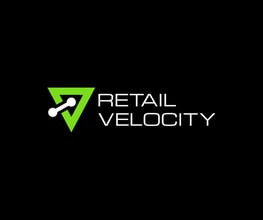
Why Data Harmonization is Good for Your Business
Table of Contents
- The Headaches of Harmonization
- Harmonize to Optimize Sales and Margins
- The Big Picture: Better Business
- Without Data Harmonization
- Harmonize the Entire Enterprise
Harmonization—it’s a term that’s music to the ears. Yet when it comes to the process of merging data and making it easy to manipulate and inform strategic decisions for CPGs, few people understand how data harmonization works—and even more importantly—how it benefits their business.
At its most basic, data harmonization is a method of automatically synchronizing various file types, data sources, and even field names and columns in spreadsheets so they are all “apples to apples.” It’s a way to merge data from different sources so it is uniform, timely, and extremely useful in attaining meaningful and reliable business insights.
Related: The Importance of Cleansed, Harmonized, Normalized Data
The Headaches of Harmonization
For CPGs, data harmonizing usually means manually collecting raw retail POS data (including both online and brick and mortar) from across numerous retailers, internal enterprise systems, and various third-party resources such as syndicated data and weather—and assembling it into one coherent (and enormous) spreadsheet. When data is harmonized, the language that retailer A uses (“product 1” for instance), will match up to the language that retailer B uses (“product X” for instance), as well as the language that retailer C uses (“red sweater” for instance), and all will ultimately align with the predesignated label for that product (“Red Cardigan Sweater”). Now you have everyone speaking the same language, using the same terminology.
However, harmonizing data by hand can be labor-intensive and time-intensive, and it is prone to human error. CPGs regularly report spending numerous, painstaking hours per week (or even a week itself) just getting the broad data from across markets harmonized and ready for analysis. By this time, the data is stale and possibly inaccurate—and business users are tired and possibly grumpy. Yet they haven’t even begun to wring out the insights from the harmonized data.
Harmonize to Optimize Sales and Margins
There are more efficient and accurate ways to achieve harmonized data. With a retail analytics software platform like VELOCITY® that does the heavy lifting of harmonization at the most granular level, the process is completed quickly and efficiently. All extracted and imported data is cleansed, harmonized, and normalized automatically so it’s delivered in a perfectly understandable and usable form. Then the reporting and discovery process can begin.
Sales, marketing, supply chain, and production teams can find patterns and trends in their data in near real time down to the SKU and store levels daily. They can look top level across all retailers and see revelatory insights:
- Sales: Sales teams can view POS data by product category, by retailer, by store, and by SKU in near real time to know exactly how each is performing. They can identify regions that are performing well and understand what is driving that success. Conversely, they can see which regions need help. Sales teams can determine which retailers (and stores) are overperforming or underperforming and get a detailed look at how the category is being handled on a granular level to better understand the “why” behind performance. They can perform price-point analyses to see how pricing affects sales and promotions, to eliminate or reduce out-of-stocks, and to get near real-time numbers on profitability by viewing margins.
- Marketing: Marketing teams executing new product launches and marketing campaigns can see lift by brand, product type, and SKU in near real time across retailers, regions, and online. For national or regional promotions, they can see the bigger picture. If a promotion at one retailer is cannibalizing another retailer, the marketing team can develop a more effective overall strategy to reduce cannibalization and ensure optimal sales for both retailers.
- Integrated Business Planning, Sales and Operations Planning: Even though they may have different forecasts, the sales, marketing, and production teams need to work off the same plan and utilize accurate data analytics to optimize their business processes. Harmonization makes this happen.
- Supply Chain: With harmonized data, supply chain teams can see near real-time retail inventory. They can determine whether they’re running out of product or stuffing the channel to eliminate bullwhip effects. If all orders are in but there’s not enough inventory to fulfill all retailers, CPGs can make timely, educated decisions on how to best allocate inventory to the retailers that need it the most.
- Production: Harmonization helps manufacturers track consumer trends to optimize which products are produced and to decide what quantities of raw materials they require for production. Demand planning teams can see what actually sold in the marketplace in near real time in order to ascertain true demand rather than forecasting to historical shipments and not accounting for shrink, returns, and markdowns. They’ll have more accurate, timely, cost-savings strategies they can adjust based on new product launches, seasonality, promotions, and holidays. This approach is immensely more effective.
The Big Picture: Better Business
From a big picture perspective, the easily digestible information created by harmonization helps inform business decisions across the entire enterprise:
- Sales teams can get the right products into their consumers’ hands at the right time and at the right price, which in turn helps their retail accounts. In this way, the sales team can increase consumer satisfaction and brand loyalty.
- Marketing teams can better plan and execute their product launches, promotions, and campaigns in real time.
- Supply chain teams gain an accurate picture of retail inventories and can shift shipping mixes, quantities, and dates to satisfy near real-time demand.
- Demand planning personnel can develop more accurate production forecasts.
Further, information that’s harmonized across retailers also generates labor savings, improves timeliness, and increases accuracy since CPGs are not dealing with error-prone, manually intensive spreadsheets.
View Infographic: The Importance of Data Cleansing and Harmonization.
Without Data Harmonization
While there are numerous benefits to harmonization, there are a number of ramifications for CPGs that do not have and utilize harmonized data. From lost shelf space and lost sales to poor replenishment and lost market share, lack of accurate information across retailers can cause real issues. It can also affect your internal stakeholders. IT teams must spend a large amount of time and effort managing and merging databases to help produce the information and reports requested from sales and marketing teams. Executives requiring top-level reporting don’t have the visibility into timely, accurate data to assess market share and monitor business growth.
Harmonize the Entire Enterprise
Since harmonization brings various file types and naming conventions together in a singular, uniform format, data is easily accessible and shareable by all business teams—supporting a company wishing to break down information silos and leverage one version of the truth across its enterprise. By automating the harmonization process and leveraging clean, timely data, companies significantly improve forecasting and can usually reach 80% accuracy of production forecast to actual demand and often higher; if they’re able to achieve 90%, that can equate to a savings of tens of millions of dollars per year.
Harmonization has enormous benefits for the business as a whole. As a basic building block for generating actionable insights, it’s imperative to harmonize before you can strategize. As with so many things, if you get the fundamentals right, you’ll be able to build successfully from there. That type of harmonization is music to everyone's ears.
To harness the power of data harmonization for your business, talk with us today.



